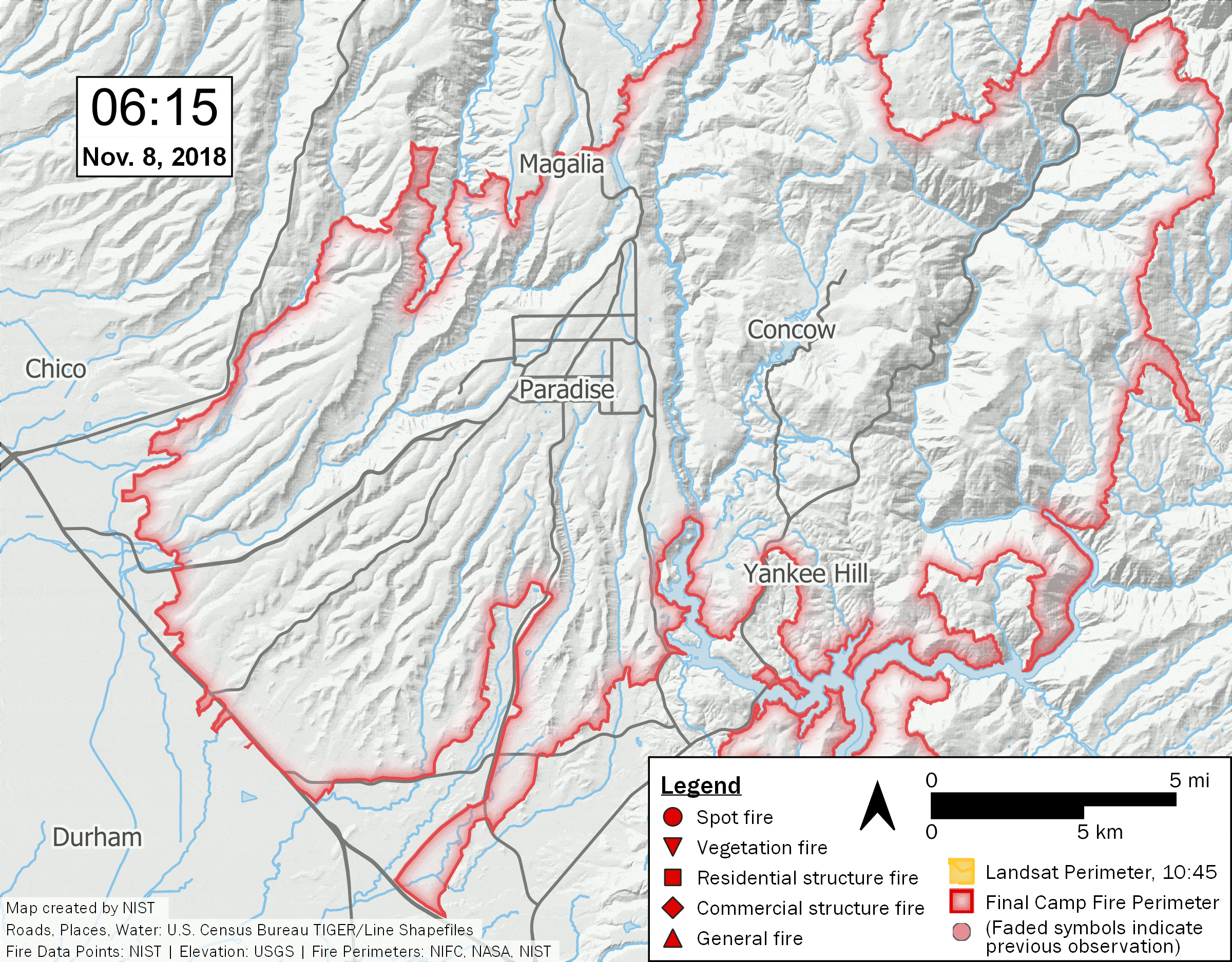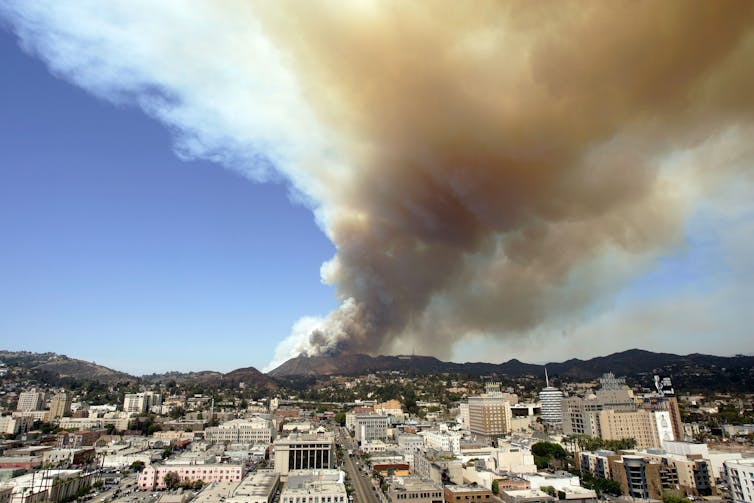This article is part of TPM Cafe, TPM’s home for opinion and news analysis. It was originally published at The Conversation.
Wildfires, pushed by powerful winds, raced through Lahaina, Hawaii, on Aug. 8 and 9, 2023, leaving a charred and smoldering landscape across the tourist town of about 13,000 residents that was once the capital of the Kingdom of Hawaii. At least 36 people died, Maui County officials said. Others were rescued by the U.S. Coast Guard after going into the ocean to escape the flames.
Fires were still burning on Aug. 10, both in Maui’s tourist-filled west coast and farther inland, as well as on the Big Island of Hawaii. Dry grasses and strong winds, influenced by Hurricane Dora passing far to the south, heightened the fire risk.
Most fires in the U.S. are suppressed before they have a chance to threaten communities, but the winds were too strong to send helicopters into the sky to help contain Maui’s fires on the first day, leaving firefighters to battle the blazes from the ground.
Lt. Gov. Sylvia Luke issued an emergency declaration, activating the National Guard to help, and urged travelers to stay away.
Fires have become an increasing risk in many areas of the U.S. that people once considered safe.
Over the past two decades, a staggering 21.8 million Americans found themselves living within 3 miles (5 kilometers) of a large wildfire. Nearly 600,000 of them were directly exposed to the fire, with their homes inside the wildfire perimeter. That number — people directly exposed to wildfires — more than doubled from 2000 to 2019, my team’s recent research shows.
But while commentators often blame the rising risk on homebuilders pushing deeper into the wildland areas, we found that the population growth in these high-risk areas explained only a small part of the increase in the number of people who were exposed to wildfires.
Instead, three-quarters of this trend was driven by intense fires growing out of control and encroaching on existing communities.
That knowledge has implications for how communities prepare to fight wildfires in the future, how they respond to population growth and whether policy changes such as increasing insurance premiums to reduce losses will be effective.

What climate change has to do with wildfires
Hot, dry weather pulls moisture from plants and soil, leaving dry fuel that can easily burn. On a windy day, a spark from a power line, campfire or lightning can start a wildfire that quickly spreads.
Recent research on California’s fires found that almost all of the increase in that state’s burned area in recent decades was due to anthropogenic climate change — meaning climate change caused by human activities.
Our new research looked beyond just the area burned and asked: Where were people exposed to wildfires, and why?
Where wildfire exposure was highest
I am a climate scientist who studies the wildfire-climate relationship and its socioenvironmental impacts. Colleagues and I analyzed the boundaries of more than 15,000 large wildfires across the lower 48 states and annual population distribution data to estimate the number of people exposed to those fires.
If you picture wildfire photos taken from a plane, fires generally burn in patches rather than as a wall of flame. Pockets of homes within the fire boundary survive, but many also burn.

While the population has grown in the wildland-urban interface — the region where houses intermingle with forests, shrublands or grasslands — we found that population growth accounted for only about one-quarter of the increase in the number of humans directly exposed to wildfires across the lower 48 states from 2000 to 2019.
Three-quarters of the 125% increase in exposure was due to fires increasingly encroaching on existing communities. The total burned area increased only 38%, but the locations of intense fires near towns and cities put lives at risk.
In California, the state with the most people exposed to fires, several wildfire catastrophes hit communities that had existed long before 2000. Almost all these catastrophes occurred during dry, hot, windy conditions that have become increasingly frequent because of climate change.

What communities can do to lower the risk
Studies have shown that even in conservative scenarios, the amount of area that burns in Western wildfires is projected to grow in the next few decades.
How much these fires grow and how intense they become depends largely on warming trends. Reducing greenhouse gas emissions will help slow warming. But communities will also have to adapt to more wildfires. Developing community-level wildfire response plans, reducing human ignitions of wildfires and improving zoning and building codes can help prevent fires from becoming destructive.
This article is republished from The Conversation under a Creative Commons license. Read the original article.







My deepest sympathies for everyone harmed by this fire.
A month ago, our community in the Hudson Valley had tragic flash flooding that has devastated so many lives.
Climate Changed.
The solution: organize. Organize, organize, organize. No one else is going to do this. It’s up to us. Green New Deal NOW.
Unfortunately, the one action that has a good chance of stopping and even reversing climate change in years rather than centuries - direct Climate cooling through sunlight reflection, or other means- is rejected by much of the Climate commissariat, in what is likely the most strategic mistake in the history of mankind.
Even if humanity comes together to reach net zero emissions, that will not prevent climate impacts from being many times worse than they are today for centuries to come. That is unfortunately what the science clearly tells us.
Truly terrible disaster. My better half worked in Lahaina in the mid-80s (she worked at Crazy Shirts there and her mom had a condo at The Whaler in Kaanapali), and we went to Maui and spent time in Lahaina while on vacation several years back (as well as spending 5 days on the Big Island) including going whale watching on Captain Steve’s boat which sails out of Lahaina.
But more relevant, her nephew is there right now as they were on their honeymoon. They are safe but can’t drive anywhere at the moment for lack of gas and are due to fly back to Bend OR this weekend, but we will see if that happens.
It is truly horrific to see the devastation, and to hear of the loss of life.
The disasters we have lately clearly demonstrate that climate change is the one that no one avoids; it will impact everyone, and if we are very lucky, we are the ones that survive when the climate induced disaster rolls through our area.
I always wonder if the elite have thought this through, and I am guessing not.
What happened in Lahaina is so unbelievably tragic. It’s the former Hawaiian capital and as far as I know, the oldest Euro-American settlement in the Pacific. The cost in lives, property, and history lost is incalculable, and tragedies like this are only going to become more common.
I generally travel to Hawaii every year, typically to Maui. On my last visit last September I was shocked by how dry it was in West Maui, while around Wailuku roads had been washed out and Kehei was flooded with mud. Upcountry was the only area that seemed normal, but now I read there were fires up there as well.
It’s going to take a long time to recover - whatever recovery means in this case. Lahaina is dead and I doubt will be back in any recognizable form. I would expect insurance companies to try to cheat or outwait their clients while developers circle like vultures looking to gobble up property for a song. Nothing happens fast in Hawaii (for a lot of reasons), and the shear scale of what needs to be done to make people whole means that most of them won’t live to see that happen.